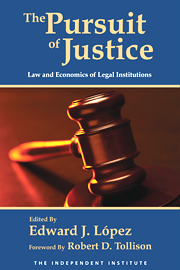On April 17, Indianapolis’ police chief stepped down after his department botched the handling of evidence in a high-profile case involving one of its own: an officer who may have been legally drunk when he drove his police car into two motorcycles stopped at a red light. The tainted blood sample has fueled allegations of a possible police cover-up in the case.
The Indianapolis incident provides another reminder that there needs to be a wall of separation between forensic science and law enforcement.
One city that’s on the right track is Houston, where Mayor Annise Parker has called for an independent crime lab, which would report to an independent board, rather than the police or prosecutor’s office.
Parker has the right idea—first, and foremost, because it matters who’s boss.
If you work for the police, you tend to see things from that point of view. Same goes for the prosecution. Usually, it is not a conscious thing. You want to be fair and unbiased, and you think you are. But when the boss hopes you’ll find evidence to support her point of view, your mistakes may lean in that direction.
That’s what happened in Houston, where an independent audit in 2006 found several cases in which forensic scientists in the crime lab had skewed reports—perhaps unintentionally in most cases—to fit the police theory of the cases.
Intentional or not, mistakes that incriminate the innocent—or gloss over the culpability of the guilty—are a real problem, and every reasonable action must be taken to prevent them from happening.
You get this sort of problem whenever a crime lab is a part of law enforcement. That’s why an important 2009 report commissioned by Congress recommended that crime labs be removed from law enforcement agencies.
According to the report, produced by the National Academy of Sciences, “Forensic scientists who sit administratively in law enforcement agencies or prosecutors’ offices, or who are hired by those units, are subject to a general risk of bias.” This “risk of bias” helps explain how you get cases like that of Houston’s Josiah Sutton, who was convicted of rape at 16 years old. Sutton’s conviction turned on DNA evidence later revealed to be wrong. After Sutton spent more than four years in prison, a proper DNA test showed he could not have been one of the rapists. Putting the crime lab under the police may have set the stage for this error, which supported the police theory.
That’s why it’s time to change the relationship between crime labs and law enforcement.
Some disagree. For example, a Houston-area official, Harris County Commissioner Steve Radack, has argued for a regional crime lab, which would fall under the jurisdiction of the Harris County Medical Examiner’s Office.
That sounds fair enough—except, the mission statement of the M.E.’s office says its objective is to provide “the highest analytical support” to the county’s medical examiners and law enforcement. Thus, putting the crime lab under the M.E. would do little to reduce the disproportionate influence of law enforcement on the scientific analysis of criminal evidence.
Crime labs should produce unbiased scientific evidence. In order to be as unbiased as possible, they should report to independent boards. The boards should represent a diverse group of stakeholders, including a local prosecutor, a prominent defense attorney, a representative from the public defender’s office, a traditional scientist working, perhaps, at a university, and a forensic scientist from another jurisdiction.
Board members would have both oversight responsibilities for the laboratory and the ability to hire and fire the laboratory director. With a board running the crime lab, the “boss” represents several interests and several points of view. When mistakes are made, they will be less biased.
No organizational structure can prevent all mistakes or eliminate every source of bias. But if crime labs answer to a broad constituency, rather than just law enforcement, we should have fewer Josiah Sutton convictions, fewer mishandled blood samples and more justice.








